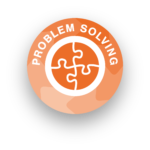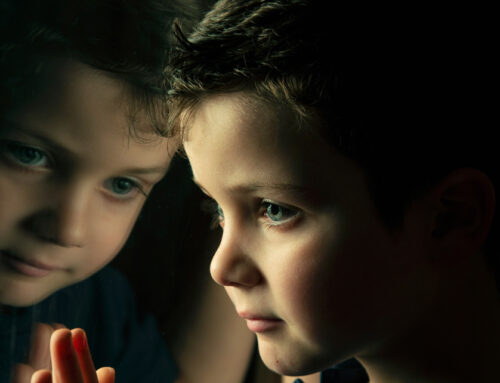Understanding Empathy
Human beings and other living creatures may have felt empathy for millennia, however a word for it has only existed in the English language for just over 100 years. Around 1900, the English psychologist Edward B. Titchener first coined the term ‘empathy’, taken from the emerging new German words ‘Einfühlung’ or ‘Einfühlungsvermögen’.
So, what exactly is empathy? OxfordLearnersDictionaries.com gives a brief summary as “the ability to understand another person’s feelings, experience, etc”. In a nutshell, this is it. Yet anyone trying to explain empathy – or an apparent lack of it – will tell you it doesn’t seem that simple!
According to ‘Parenting Science’, different researchers adopt their own definitions, but most “include the idea of ‘tuning in’ to the feelings of another creature. You watch someone else. You observe his situation. You recognize what he must be feeling and experience similar feelings yourself.” This is not the same as feeling identically the same way but does show you are “opening up a pathway to sympathy, kindness, compassion, altruism and offering a helping hand”.
This highlights that there is a difference between empathy and sympathy. “Empathy is putting yourself in the shoes of another [whereas] sympathy is largely used to convey commiseration, pity, or feelings of sorrow for someone else who is experiencing misfortune […] but you don’t know what it is like to be in their shoes”, according to Dictionary.com.
High Learning Potential, Autism, Alexithymia and Empathy
There is a strong suggestion that Autistic Spectrum Disorder (ASD), affects children with High Learning Potential more often than ‘neuro-typical’ children. Leading charity Potential Plus UK has supported the needs of gifted children and their families for over 50 years. It offers many helpful resources including fact sheets about high learning potential and autism and this thought-provoking article about building friendships and modelling social skills, https://potentialplusuk.org/index.php/2018/11/20/friendships-why-dont-i-fit-in/ .
High learning potential or not, all too often it is assumed that someone with ASD will inevitably have difficulties feeling empathy. However, Autism expert The Aspie Coach believes that at least two of three aspects of empathy (cognitive, affective and compassionate empathy) may cause no trouble at all. She explains that ASD frequently has no effect on someone’s ability to share in another’s feelings (affective) or desire to help others (compassionate). The most problematic area is likely to be cognitive empathy; “the ability to predict others’ thoughts and intentions including the ability to ‘read between the lines’ during communication”.
Similarly, leading neuroscientist team Jean Decety and Jason Cowell caution how ‘empathy’ is often used as a blanket term to describe the three distinct processes of emotional sharing/emotional contagion, (feeling distress as a result of observing stress in another); empathic concern, (the motivation to care for the vulnerable or distressed); and perspective-taking, (consciously putting yourself in another’s mind and imagining their thoughts and feelings). A study at the University of Birmingham found that managers who were skilled in perspective-taking made good negotiators and were adept at motivating others.
A fascinating piece of research by London Lecturer Rebecca Brewer and graduate Jennifer Murphy asserts; “We found that individuals with autism but not alexithymia show typical levels of empathy, whereas people with alexithymia (regardless of whether they have autism) are less empathic. So autism is not associated with a lack of empathy, but alexithymia is.” (https://www.spectrumnews.org/opinion/viewpoint/people-with-autism-can-read-emotions-feel-empathy/ )
Taking all this on board, it seems that a careful investigation of highlearning potential, autism, and alexithymia alongside empathy in all its forms would be key to understanding strengths and developing weaknesses in yourself and others, including your children or students.
Can You Build Empathy?
Excitingly, evidence suggests that empathy is shaped by a child’s experience and culture – and therefore yes it can be ‘taught’. As part of Life Skills, Citizenship or Religious Education, the acquisition of empathy skills and an ability to notice commonalities underpins a young learner’s positive, caring mindset towards ‘other’ sections of society.
The US-based Ashoka network goes so far as to claim “empathy is emerging alongside reading and math[s] as a new literacy”; a healthy sign that empathy is a crucial skill – and one that can be learned.
By the same token, hours spent in a negative home or social environment, playing violent computer games or using damaging social media can also influence the growing brain and desensitise a child to second-hand pain.
This article explores some of these issues further; https://www.parentingscience.com/teaching-empathy.html
How to Teach Empathy
Reading and New Media
- Empathy Lab’s huge resources include features on teaching empathy through stories and authors as well as a link to their interesting write-up in The Guardian, (https://www.theguardian.com/teacher-network/2015/may/13/reading-teach-children-empathy ). In the run-up to annual Empathy Day in mid-June, look out for their annual Read For Empathy guide as well as free packs for teachers, educators and libraries. https://www.empathylab.uk/
- “Stories, books and films are opportunities to practise empathy. What do the characters think and feel? What motivates them to behave in particular ways? The Empathy Library has reviews of hundreds of novels, children’s books, feature films and videos on empathy […to focus on…] marginalised people to better understand the emotions, behaviours, and intentions of others.” British Council resources are at https://www.britishcouncil.org/voices-magazine/why-teach-empathy
- Potential Plus UK puts a fascinating spin on ways of reading and new formats appropriate for high potential learners; https://potentialplusuk.org/index.php/2018/10/23/screens-and-reading-superheroes-embracing-new-formats-with-high-learning-potential-readers/
- The list of books recommended by (and for) children with high learning potential makes an excellent resource for High potential learners to analyse for empathy and emotion (https://potentialplusuk.org/index.php/2018/08/10/book-recommendations-in-2017-from-one-high-learning-potential-child-to-another/) as do the following reading lists also from Potential Plus UK for early years (https://potentialplusuk.org/wp-content/uploads/2017/02/PA106-Reading-List-for-Early-Years-HLP-Children-170201a.pdf), Key Stage 1 (https://potentialplusuk.org/wp-content/uploads/2017/02/PA107-Reading-List-for-KS1-HLP-Children-170201a.pdf) or Key Stage 2 (https://potentialplusuk.org/wp-content/uploads/2017/02/PA108-Reading-List-for-KS2-HLP-Readers-170201a.pdf)
Activities, information and worksheets
- There are great worksheets available at https://positivepsychologyprogram.com/kindness-activities-empathy-worksheets/
- Empathy Lab (https://www.empathylab.uk/ ) offers an enthusiastic programme of events across England and now Wales, peaking around the annual Empathy Day in mid-June.
- The Ashoka network offers amazingly wide-ranging resources at https://startempathy.org/ to help “ensure that every child grows up fully developing his or her innate capacity for empathy”.
- For a more global perspective, visit https://kidworldcitizen.org/videos-about-empathy-for-kids/
- For tested activities for tots to teens; https://www.parentingscience.com/social-skills-activities.html
- Boost ‘reading’ facial expressions at https://www.parentingscience.com/facial-expressions-for-kids.html
- Home educators, teachers or family can get great tips and insight here; https://www.parentingscience.com/teaching-empathy-tips.html
- Click here for the Teaching Tolerance magazine, film kits, lesson plans and tailored classroom resources; https://www.tolerance.org/classroom-resources











